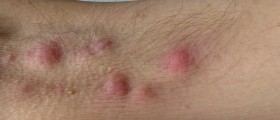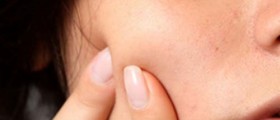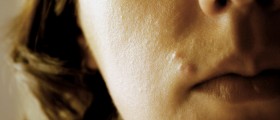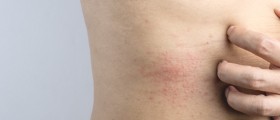
Heat rash is a skin condition affecting people of all ages and not just babies, as many people would think. In the majority of cases heat rash occurs during hot and humid weather and is a consequence of blockage of sweat ducts. As a result, sweat stays trapped inside sweat glands which eventually leads to formation of superficial blisters and deep red bumps. In some people heat rash is rather itchy and causes prickly feeling.
Heat Rash Symptoms and Signs
There are three types of skin rash, miliaria crystallina, miliaria rubra and miliaria profunda.
Miliaria crystallina is actually the mildest form of the condition, affecting only the superficial layer of the skin. The affected parts of the body are covered with superficial blisters and bumps. These skin lesions break easily. There is no pain or itchiness. The rash of this type typically occurs in newborns, withdraws spontaneously and causes no additional problems.
Miliaria rubra is a type of heat rash affecting deeper layers of the skin. It is most commonly a problem among people who are bed ridden especially if weather is hot and humid. As for infants miliaria rubra may occur as well, and is usually reported between the first and third week of their lives. Such rash is itchy and prickly and the affected skin either does not sweat at all, or there is little perspiration.
Finally, miliaria profunda is not so frequently reported type of skin rash. It predominantly develops in adults. In the majority of cases miliaria profunda occurs after exercising. It is in a form of firm, flesh-colored lesions that look like goose bumps. In more serious cases people suffering from miliaria profunda may additionally become exhausted, feel dizzy and nauseated or have rapid pulse.
Heat Rash Causes and Risk Factors
As it has already been mentioned heat rash is a condition closely associated with clogging of sweat ducts. So, patients are not capable of sweating, and sweat remains trapped in the skin, initiating skin inflammation and rash formation.
The actual cause of blockage of sweat glands remains unknown but there are some contributing factors identified. For instance, the condition develops due to immature sweat ducts (infants), inappropriate adaptive mechanisms when being in tropical climates, physical activity and certain fabrics that do not allow the skin to sweat and breathe normally. Overheating and sometimes even intake of certain medications may be blamed for the onset of heat rash. Finally, heat rash affects patients confined to bed.Treatment for Heat Rash
In order to prevent heat rash one must reduce sweating and try to stay in air-conditioned buildings whenever possible. Light clothing made of natural fabrics will additionally help. It is good to reduce, if not completely eliminate physical activity.
While mild types of heat rash usually subside on their own, more severe forms require proper treatment. Patients may be prescribed Calamine lotion or anhydrous lanolin while topical steroids are administered only in case of the most severe heat rash.

















Your thoughts on this
Loading...